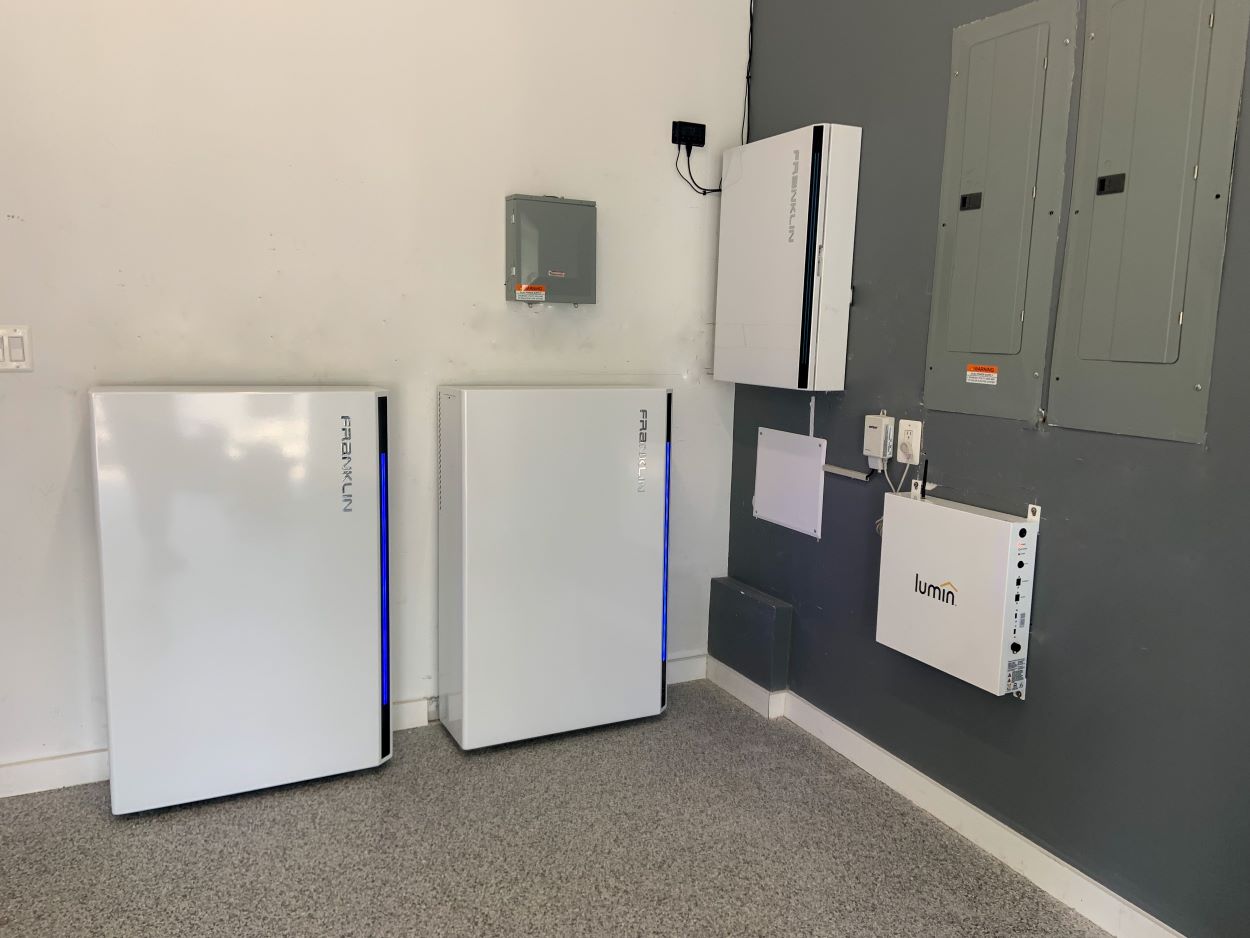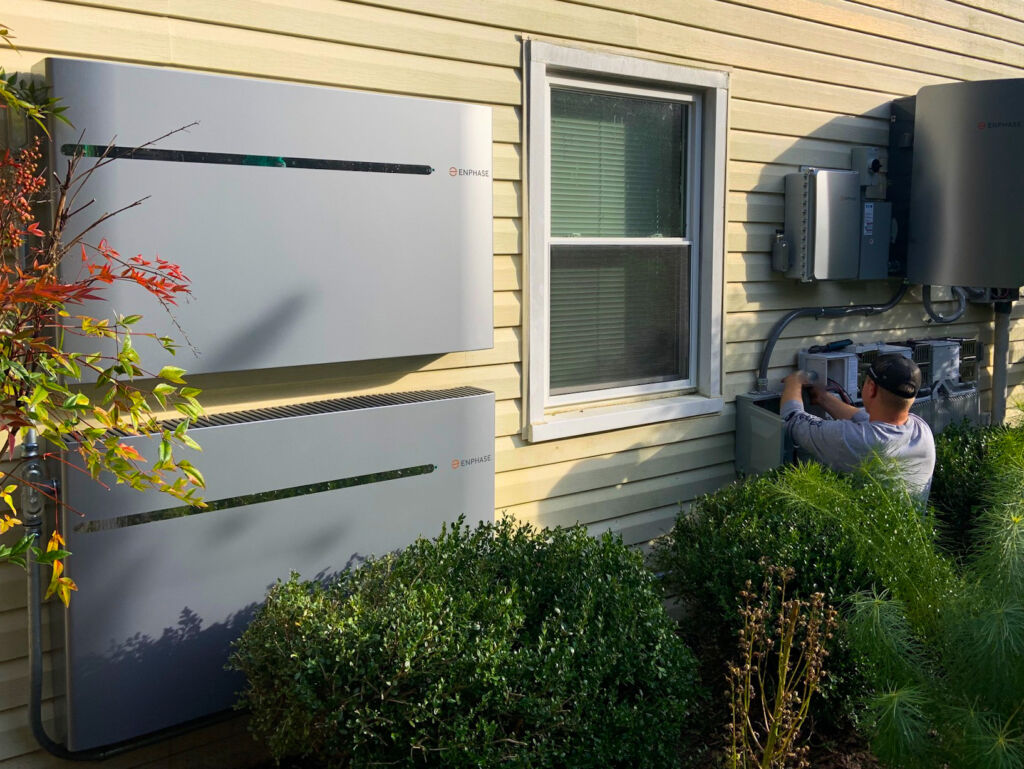Equipping your home with a solar energy system is a huge step in taking control of your energy. By shifting from total grid reliance to producing your own clean power, you’ve fundamentally changed your relationship to your home’s energy. So why stop there? Let’s look at the benefits of adding battery storage and other solutions so your solar can take you even further.

Solar plus storage: a dollars and sense proposition
Lots of us solar owners are primed to think of our solar system first and foremost as an investment, paying back its value plus a return. While that’s true, thinking purely about electric bill savings could limit your view of your solar system’s potential. Your solar system has the potential to keep your most crucial devices powered in an outage, however this is only unlocked if you pair it with storage.
If your location frequently experiences power outages (and you never know when those will become more frequent) there’s no reason that your solar system shouldn’t be giving you backup. Achieving that takes the addition of a battery.
This is because the solar system needs to be de-activated in an outage to avoid energizing electrical lines that workers might be repairing. In an energy storage setup, a transfer switch automatically keeps solar energy from going out through the meter while allowing it to be used or stored, even while the grid is down. Some customers with or without solar might consider using a gas generator instead, though its drawbacks include risk of high carbon monoxide concentration entering the home, noise, and more.
If you want to achieve energy resilience in your home, it’s probably time to think about energy storage. But before we do, let’s touch on the best option we’ve found for users to take control of their energy use during and outside of outages.
Not your grandparents’ breaker panel
Some customers have shied away from battery back up with the idea that a system large enough to support all their essentials in an outage would be prohibitively expensive. In recent years, Ipsun Solar has acted on this feedback and helped several customers add storage at a more modest custom scale while using the SPAN smart panel to select the circuits to energize.
What’s SPAN? Let’s explain it like this: Imagine your great grandmother visiting your home and noticing all your new appliances – coffee pods, streaming TV, a camera where your doorbell should be? What a brave new world! Now imagine she’s looking at your electrical panel – she recognizes that for sure, because even most new breaker boxes going in today look lot like 100 years ago. But with SPAN, she wouldn’t!
In a sleek and clean digitally monitored electrical panel, your home’s circuits are clearly defined and grouped in a convenient app which you can toggle on and off right from your app, even while away from home. As you pick what to have on or leave off, the program updates the estimated hours of battery life you can count on. SPAN can triple the amount of time that Ipsun Solar customers’ battery storage can last in an outage.
In other words, with SPAN technology, the energy storage user now has the freedom to judge what to power in an outage right in that moment. You could spontaneously decide that everyone needs hot water for showers, instead of the lights and ceiling fans, or vice versa. If you’re betting on the outage only lasting a couple of hours, you can feel confident leaving most things on, even the AC, while you keep movie night going.
Just keep the WIFI modem on and your phone or tablet charged, so you can work the SPAN smart panel via its app!
Now that we’ve taken charge of our energy with SPAN, we’ve eliminated those hidden “vampire” loads that were sucking precious battery time. Which battery you choose depends on your home, number of occupants, budget, must-run systems, and the viable location where you can place your energy storage unit(s).
Solar battery brands and system sizes
Ipsun Solar offers energy storage products from three different brands to complete your battery installation, and here are some of the strengths of each:
Tesla Powerwall
A popular product from a brand with a following, customers often request Powerwall specifically. It is synonymous with energy freedom and grid independence for plenty of customers (though two other brands are discussed below.) With various ways of using the system, from Self-Powered to Back-up only to Advanced time-based control, there’s a customized method of setting up your Powerwall 2 for everyone’s storage goals. It’s temperature controlled, so we can install it in an outdoor location.
Each Powerwall 2 has 13.5 kWh of usable capacity. Two Powerwalls would make 27 kWh, if your plan for partial home backup includes more necessary circuits that you plan to run. It can deliver 5.8 kW of power on a constant basis and 7 kW in short bursts, with about 90% roundtrip efficiency charging and draining.
Its minimalist design is some customers’ preferred option in garages as a conversation piece signaling the shift to renewable energy and reducing vehicle and home emissions. Also, Tesla drivers will benefit from seeing their real-time and historical power-flow and energy usage data, and of course level of vehicle charge, battery charge, and solar production data in one app.
Enphase’s IQ Battery 5P
Enphase’s IQ Battery 5P is an excellent option. A modular solution, as long as space is available we will often position two, three, or more of the 5 kWh units lined up along a wall spaced about 6 inches from each other, operating with low-voltage DC power and DC switches on the outside, up to 80 kWh if space permits. IQ Battery should be installed in an indoor location.
Peak power output for the IQ Battery 5P is up to 200% of continuous, 7.68 kVA for 3 seconds and 6.14 kVA for 10 seconds, or 3.84 kW of continuous power. It works with the IQ System Controller which is grid-forming with the solar panels system in an outage and receives over-the-air updates as needed, but is hardwired to the storage units, and the inverter is not centralized. Six microinverters in each unit help it to always deliver the most power possible. In case of a bad component, the system features field-replaceable parts to help speed repairs in the unlikely event that service is needed. Many homeowners enjoy the peace of mind of selecting a storage system from the same company as their solar panels system, with matching warranties and a single bottom-line point of contact. Ask for the IQ System Controller 3G for gas generator integration.

Franklin
If you’re struggling with unreliable grid power or low quality power service at your location, the Franklin Whole Home solution may be right for you. With 13.6 kWh of storage per aPower unit, sizing a system using 3 units adds up to 40.8 kWh of storage provides 15 kW of capacity, enough to run almost any home dusk to dawn. With 10kW of surge power available, it can start most air conditioning systems, giving you peace of mind that you could get through the hottest days of the year and keep sensitive family members comfortable with help from your battery backup.
And Franklin has another innovation: if the battery is depleted during an outage, its aGate controller can enter a mode in which the solar energy can be used to re-ignite the dormant storage system to resume powering devices, known as Black Start.
How do these systems make sure they are fully charged when an outage is coming? They connect to weather and utility information broadcast to their network, so you don’t need to manually prepare your system for what’s coming. The battery “knows” it needs to fill up in case the outage happens.
Conclusion & Solar Battery FAQs
Finally, here’s some dialogue where an Ipsun Solar consultant answers common questions about adding energy storage to a home or business with solar already installed:
Q: “But seriously, do I really need a battery? I almost never lose power.”
A: We’re not here to talk you into a solution where there’s no problem in the first place! Through net energy metering (NEM) most people treat the grid as if it were a battery for their solar. Moreover it’s a battery that they don’t have to fill if their solar is barely covering their energy needs on any given day – the energy is always there to draw from at night, and the same cost as during the day. But we can’t guarantee future policy, and if the states where we operate change NEM terms to provide less credit back to customers for solar energy exported during the day, there will be an advantage to getting battery storage, and larger solar arrays to fill it.
Want another pro-tip? Customers may want to plan more of their energy-intensive activities for periods when their solar is delivering energy to use.
Q: I think I want batteries, but how much battery capacity do I need?
A: Starting by studying your average offset from your solar and how far your current solar panels could “fill” a battery for nighttime consumption or as backup, we can model this and discuss what different battery capacities would achieve for you. If there is additional space for expanding solar, that may be justified, as long as the customer isn’t going to run up against maximum size rules. It’s also important to consider the surge amperage the system can handle, as sometimes starting a system like an air conditioner wouldn’t be possible for just one Enphase unit, but a Franklin can.
Battery systems charged via solar panels have eligibility for the 30% federal tax credit, which can help the customer afford the storage system they’re looking for.
Q: But can I charge my EV from the battery, when the grid is up or down?
A: Incorporating Level 2 car charging at home is an obvious part of modernizing your home energy. But we used to advise customers not to charge their vehicle from their battery because of inefficiencies inherent in the technology. Waste your energy dollars in the transfer losses from home storage to range battery, for only a few percent change in the state of car charge? No thanks. A solution, SPAN Drive, has come out recently and is aimed at those ready to decarbonize their miles and charge at home with clean energy regardless of the time of day by transferring energy from battery to battery when necessary.
We hope this post has taught you what’s available to help you sail through outages without missing a beat, while making the most of your solar system everyday.
If you’re ready to pursue some of these solutions and power up your resilient energy future, get in touch with Ipsun Solar today and we’ll start exploring storage with you.





